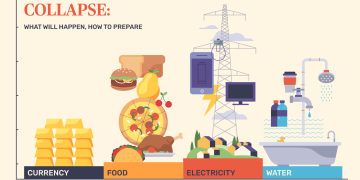A newly signed international trade agreement often signals the beginning of a major economic realignment — unlocking markets, reducing tariffs, easing regulatory burdens, and fostering regional or global cooperation. The latest deal, signed amid a backdrop of shifting global supply chains and rising protectionist sentiment, has immediately drawn the attention of governments, investors, and corporations alike.
But as the ink dries on this new accord, the most urgent question for markets becomes clear: Which industries stand to benefit first — and most — from the fresh wave of trade liberalization and economic integration? In this article, we explore the specific sectors best positioned to capture early advantages from the deal, explain why they’re likely to move first, and outline the broader implications for regional economies and global competition.
The New Trade Pact at a Glance
While details vary by region, the latest trade agreement — like previous deals such as the Regional Comprehensive Economic Partnership (RCEP) or the EU–Mercosur pact — typically includes several core components:
- Tariff Reductions: Lower duties on thousands of goods and services
- Regulatory Harmonization: Alignment of standards, safety, and compliance frameworks
- Market Access Provisions: New openings for investment, services, digital trade, and government procurement
- Rules-of-Origin Simplifications: Enabling more flexible cross-border supply chains
Such frameworks are designed to facilitate faster and more cost-effective trade across member economies, creating immediate and long-term benefits.
First Movers: Which Sectors Stand to Gain Most — and Fastest?
1. Manufacturing and Export-Oriented Industries
Why they benefit early:
Lower tariffs and improved access to partner country markets directly reduce export costs and boost competitiveness. Industries such as automobiles, machinery, electronics, and consumer goods typically see demand jump as products become more affordable to foreign buyers.
Who to watch:
- Auto parts makers and assembly plants
- Electrical equipment and semiconductor manufacturers
- Factory automation and industrial tech suppliers
Regional advantage:
Manufacturing hubs in countries like Vietnam, Mexico, Poland, and Indonesia often emerge as big winners due to strategic location and labor cost advantages.
2. Agriculture and Food Processing
Why they benefit early:
Tariff cuts on agricultural goods open new opportunities for food exporters, especially in sectors where price competitiveness is crucial. Rules-of-origin provisions and quota relaxations can dramatically increase trade volumes in staple goods.
Who to watch:
- Grain exporters (corn, soy, rice)
- Meat and dairy processors
- Fresh produce suppliers
Regional advantage:
Export-heavy regions such as Brazil (soy and beef), Australia (grains and wine), and the U.S. (corn, poultry) could see rapid growth in shipments to new markets.
3. Textiles and Apparel
Why they benefit early:
Labor-intensive and tariff-sensitive, the textile sector responds quickly to cost changes. Free trade zones and reduced input duties can increase competitiveness and spur rapid export growth.
Who to watch:
- Garment manufacturers
- Fashion retailers sourcing from new low-cost regions
- Synthetic fabric and materials producers
Regional advantage:
Nations like Bangladesh, Vietnam, and India could see export surges, especially if rules-of-origin requirements favor existing production capabilities.
4. Logistics and Cross-Border Infrastructure
Why they benefit early:
New trade flows require robust transportation networks. Logistics firms, port operators, customs brokers, and digital supply chain solutions see increased demand immediately following trade liberalization.
Who to watch:
- Freight forwarding and shipping companies
- Warehousing and third-party logistics (3PL) providers
- Customs clearance and trade facilitation platforms
Regional advantage:
Port cities and trade corridors — such as those in Southeast Asia or Central America — become vital nodes in emerging trade routes.
5. E-commerce and Digital Trade
Why they benefit early:
Modern trade agreements increasingly include digital chapters — covering data flows, digital services, IP protection, and e-signatures — that enable smoother online transactions across borders. SMEs and tech firms can scale faster without physical presence.
Who to watch:
- Cross-border e-commerce platforms
- Cloud computing and fintech providers
- Digital logistics and last-mile delivery startups
Regional advantage:
Digitally advanced economies with scalable infrastructure, such as Singapore, South Korea, and Estonia, gain a head start.

6. Green Technology and Renewable Energy
Why they benefit early:
Environmental clauses in trade deals — along with carbon border adjustments and ESG incentives — create fertile ground for clean energy collaboration. Tariff removal on solar panels, batteries, and related components lowers costs and boosts trade in green goods.
Who to watch:
- Solar and wind equipment manufacturers
- EV battery producers and recyclers
- Carbon accounting and green certification firms
Regional advantage:
Exporters of clean tech components (e.g., China, Germany) and resource-rich countries embracing energy transition (e.g., Chile, Canada) may accelerate growth.
7. Pharmaceuticals and Medical Devices
Why they benefit early:
Streamlined regulatory frameworks and IP protections encourage pharma trade and clinical collaboration. Reduced tariffs speed up the delivery of critical medicines and equipment.
Who to watch:
- Generic drug manufacturers
- Medtech and diagnostics firms
- Biotech exporters with strong R&D pipelines
Regional advantage:
India (generics), Switzerland (innovative drugs), and South Korea (biopharma) are well positioned to benefit.
Medium- to Long-Term Ripple Effects
While some sectors benefit immediately, others experience delayed impacts that can be equally significant:
- Financial Services: As capital markets become more integrated, banks and asset managers can expand into new regions.
- Education and Tourism: Easier visa regimes and cultural cooperation provisions can drive exchange flows over time.
- Real Estate and Infrastructure: Industrial zones and logistics parks may attract foreign investment due to expected trade growth.
Risks and Realities to Monitor
Despite the optimism, trade agreements do not guarantee automatic success. Key risks include:
- Implementation Delays: Bureaucracy and political resistance can slow actual changes on the ground.
- Uneven Gains: Smaller economies or less-developed sectors may struggle to compete without support.
- Backlash and Protectionism: Domestic industries under pressure may lobby for reversal or exemptions.
- Geopolitical Frictions: Rival regional blocs may emerge, limiting integration benefits.
Conclusion
The signing of a new trade agreement often marks the beginning of a new economic cycle — one that redistributes competitive advantages, opens new market channels, and challenges old assumptions about supply chains and competitiveness. While long-term benefits require structural adaptation, several industries are positioned to seize the rewards almost immediately.
From manufacturing and agriculture to logistics, digital trade, and clean energy, the early beneficiaries are those best aligned with tariff relief, cross-border demand, and regulatory harmonization. For investors, corporates, and policymakers, the task is now clear: identify where opportunity is surging first, and move decisively to capture the coming wave of cross-border growth.





























